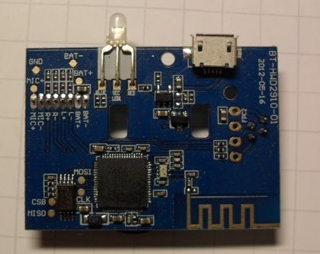1. Generally speaking, the temperature specified in the SMT workshop is 25±3 degree Celsius;
2. When printing solder paste, the materials and tools needed to prepare solder paste, steel plate, scraper, wipe paper, dust-free paper, cleaning agent, mixing knife;
3. The commonly used solder paste alloy composition is Sn/Pb alloy, and the alloy ratio is 63/37;
4. The main ingredients in the solder paste are divided into two parts: tin powder and flux.
5. The main function of flux in soldering is to remove oxides, destroy the surface tension of molten tin, and prevent re-oxidation.
6. The volume ratio of tin powder particles to Flux (flux) in the solder paste is about 1:1, and the weight ratio is about 9:1;
7. The principle of obtaining solder paste is first in, first out;
8. When the solder paste is opened and used, it must go through two important processes to reheat and stir;
9. The common production methods of steel plates are: etching, laser, electroforming;
10. The full name of SMT is Surface mount (or mounting) technology, which means surface adhesion (or mounting) technology in Chinese;

11. The full name of ESD is Electro-static discharge, which means electrostatic discharge in Chinese;
12. When making SMT equipment program, the program includes five major parts, these five parts are PCB data; Mark data; Feeder data; Nozzle data; Part data;
13. The melting point of lead-free solder Sn/Ag/Cu 96.5/3.0/0.5 is 217C;
14. The controlled relative temperature and humidity of the parts drying box is <10%;
15. Commonly used passive components (Passive Devices) include: resistance, capacitance, point sense (or diode), etc.; Active Devices (Active Devices) include: transistors, ICs, etc.;
16. The commonly used SMT steel plate is made of stainless steel;
17. The thickness of commonly used SMT steel plates is 0.15mm (or 0.12mm);
18. The types of electrostatic charge generated include friction, separation, induction, electrostatic conduction, etc.; the impact of electrostatic charge on the electronics industry is: ESD failure, electrostatic pollution; the three principles of electrostatic elimination are electrostatic neutralization, grounding, and shielding.
19. Inch size length x width 0603=0.06inch*0.03inch, metric size length x width 3216=3.2mm*1.6mm;
20. Exclusion ERB-05604-J81 No. 8 code "4" means 4 circuits, the resistance value is 56 ohms. The capacitance of the capacitor ECA-0105Y-M31 is C=106PF=1NF =1X10-6F;
21. The full name of ECN in Chinese: Engineering Change Notice; the full name of SWR in Chinese: Special Requirements Work Order, which must be countersigned by relevant departments and distributed by the Document Center to be valid;
22. The specific content of 5S is sorting, rectifying, cleaning, cleaning, and accomplishment;
23. The purpose of PCB vacuum packaging is to prevent dust and moisture;
24. The quality policy is: comprehensive quality control, implementation of the system, and providing quality required by customers; full participation and timely processing to achieve the goal of zero defects;
25. The three-not quality policy is: do not accept defective products, do not manufacture defective products, and do not discharge defective products;
26. The 4M1H of the reasons for fishbone inspection in the seven QC methods respectively refers to (in Chinese): people, machines, materials, methods, and environment;
27. The components of solder paste include: metal powder, solvent, flux, anti-sagging agent, and active agent; by weight, metal powder accounts for 85-92%, and by volume metal powder accounts for 50%; among them, metal powder is mainly The composition is tin and lead, the ratio is 63/37, and the melting point is 183°C;
28. The solder paste must be taken out of the refrigerator to return to temperature during use. The purpose is to restore the temperature of the refrigerated solder paste to normal temperature to facilitate printing. If the temperature is not restored, the defects that are prone to occur after PCBA enters Reflow are tin beads;
29. The file supply modes of the machine include: preparation mode, priority exchange mode, exchange mode and quick connection mode;
30.SMT PCB positioning methods include: vacuum positioning, mechanical hole positioning, bilateral clamp positioning and board edge positioning;